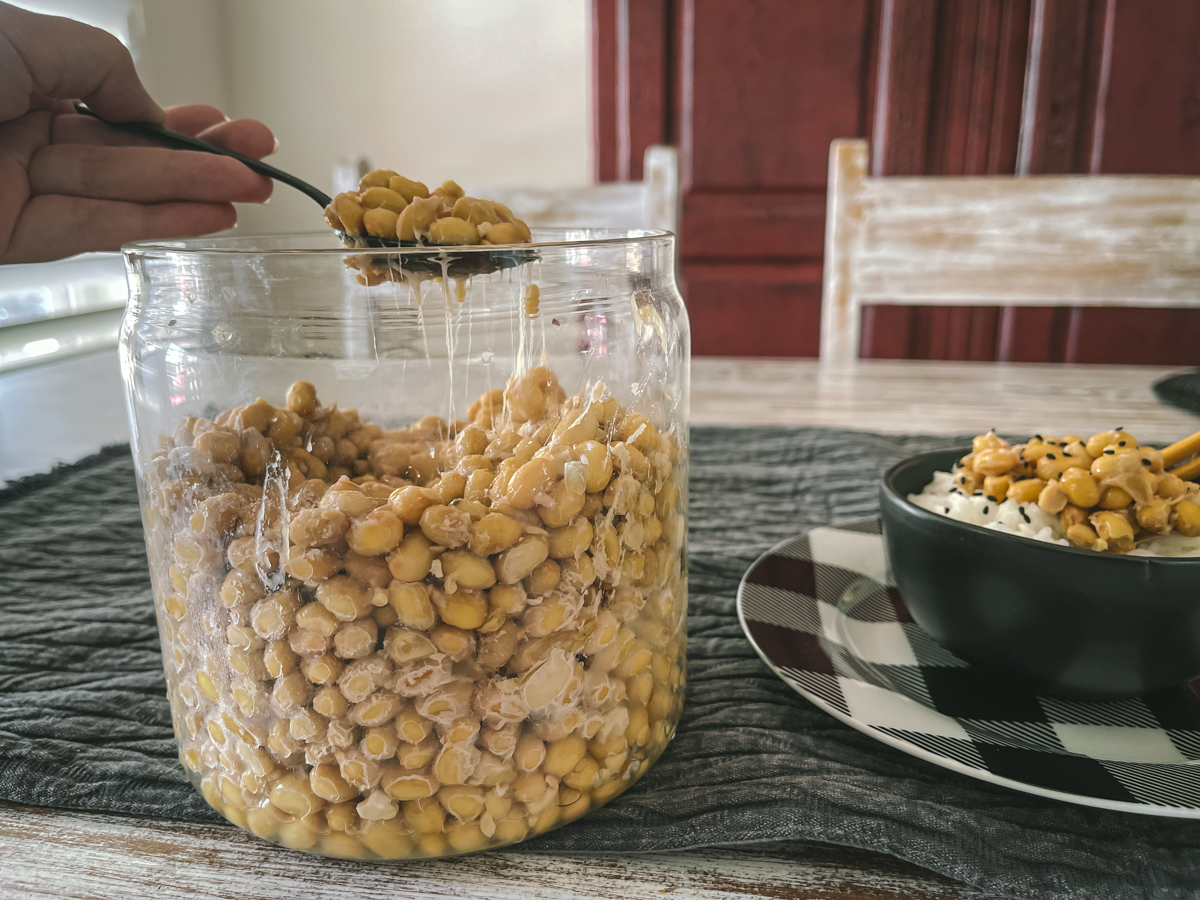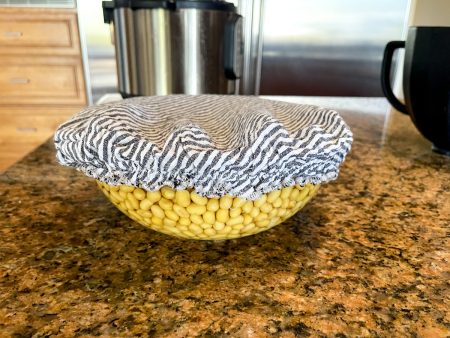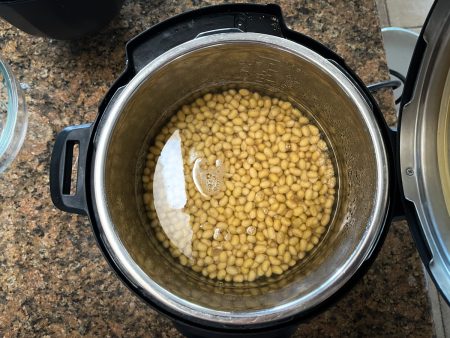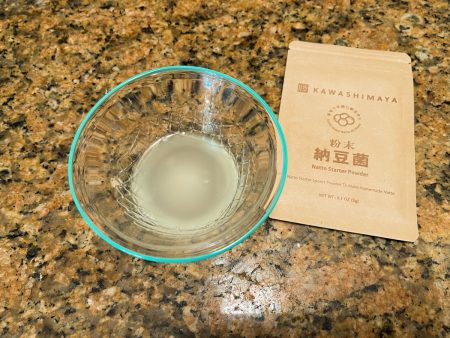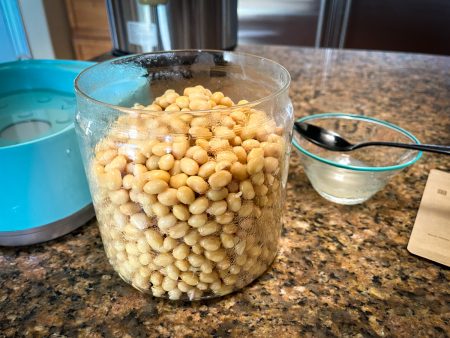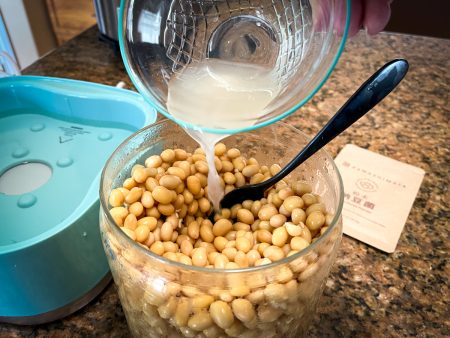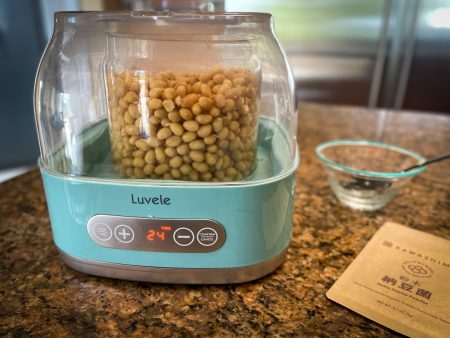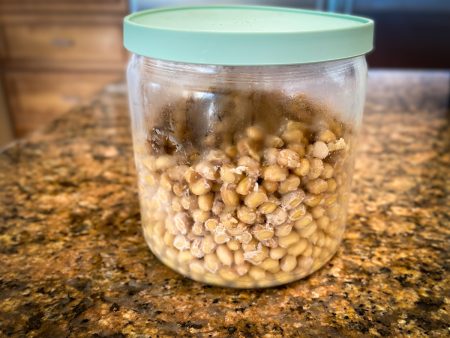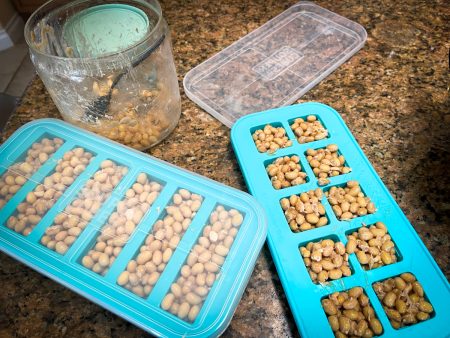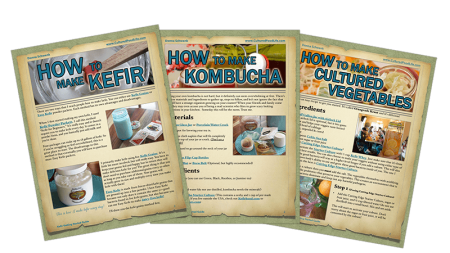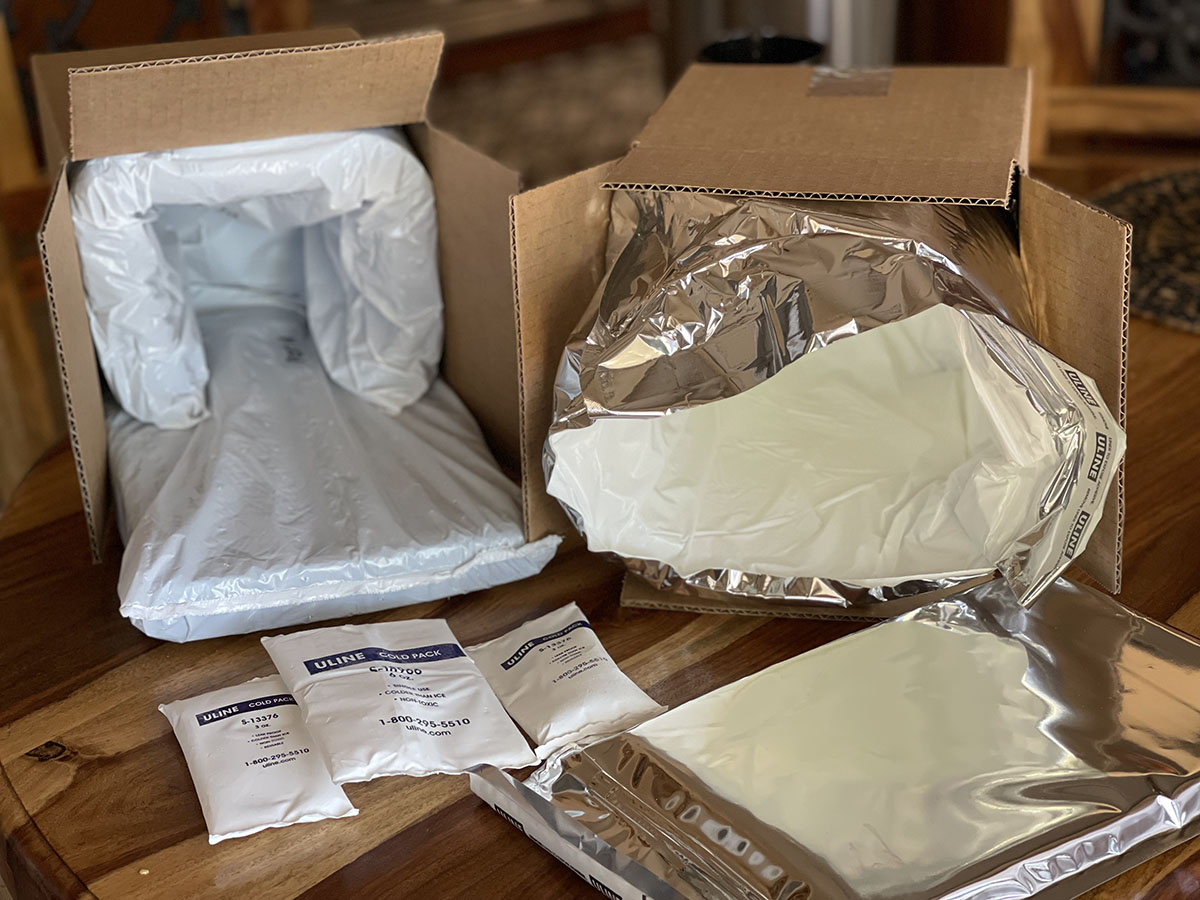
Natto: Superfood for Stroke Prevention, Blood Clot Reduction, and More
Natto: The Sticky Secret to Health
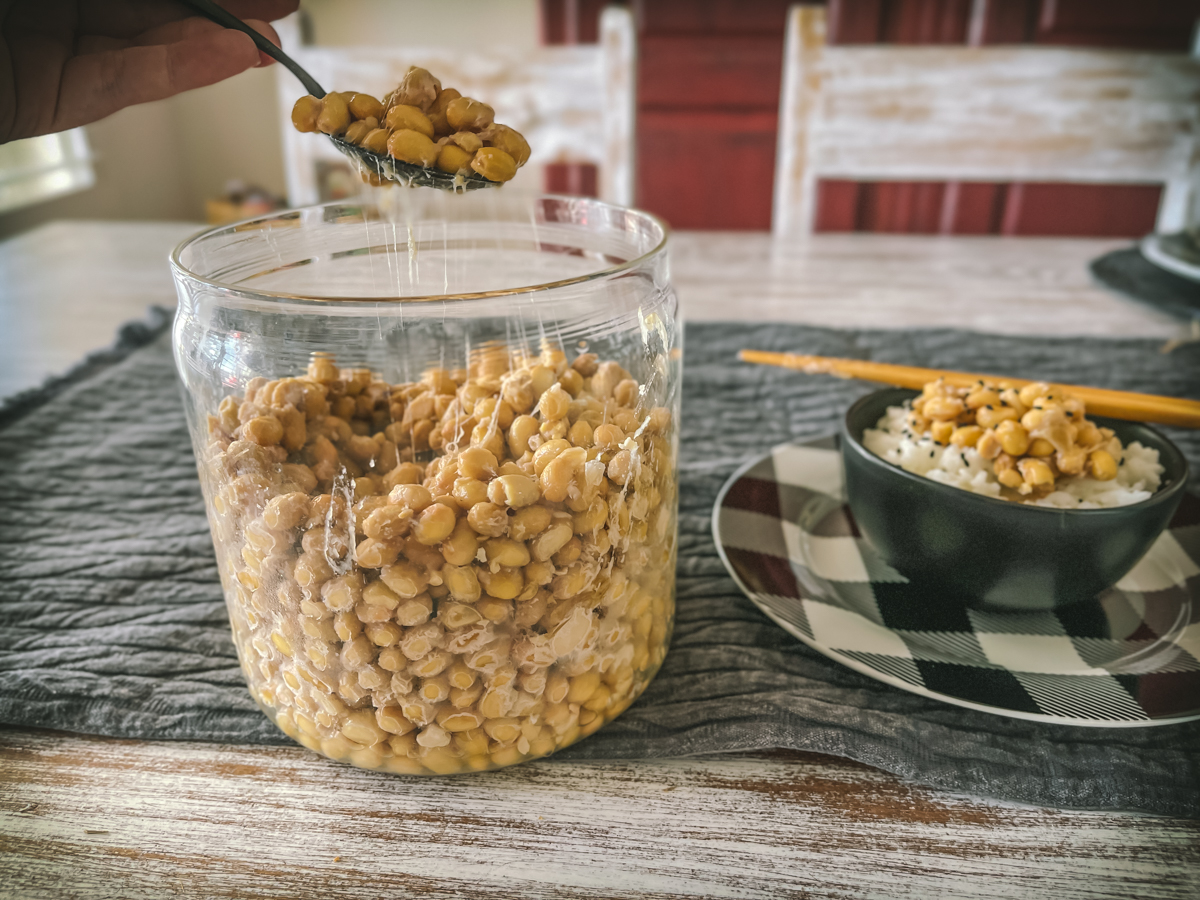
🫙Jump to the recipe and video! 🫙
If you’re on a journey like I am, for natural ways to boost your health, you might want to take a closer look at natto—a traditional fermented Japanese dish made from fermented soybeans. While its sticky texture and pungent aroma might not win everyone over at first, natto’s impressive health benefits make it a powerhouse worth considering. I have ways to help you enjoy it too!
From preventing strokes to reducing blood clots and even potentially helping the body clear out lingering spike proteins from COVID-19, natto is more than just a fermented food—it’s a nutritional gem backed by science and tradition.
What Is Natto?
Natto is created by fermenting soybeans with a beneficial bacterium called Bacillus subtilis. This process transforms the humble soybean into a sticky, stringy superfood packed with nutrients and unique compounds. It’s been a staple in Japanese cuisine for over a thousand years, often served with rice, soy sauce, and mustard. But beyond its cultural roots, natto’s health benefits are what have researchers and health enthusiasts buzzing.
Stroke Prevention and Blood Clot Reduction
One of natto’s standout features is its high concentration of nattokinase, an enzyme produced during fermentation. Nattokinase is a natural fibrinolytic, meaning it helps break down fibrin—the protein that forms blood clots. Excessive clotting can lead to serious conditions like strokes, heart attacks, and deep vein thrombosis. By promoting healthy blood flow and dissolving clots, nattokinase acts as a natural blood thinner without the side effects of pharmaceutical alternatives.[1]
Studies have shown that regular consumption of natto is linked to a lower risk of cardiovascular diseases, including strokes. For example, a Japanese study published in the Journal of Nutrition found that people who ate natto frequently had a significantly reduced risk of dying from stroke compared to those who didn’t. The secret lies in nattokinase’s ability to maintain balanced blood viscosity and prevent the blockages that can trigger a stroke. [2,3]
Boosting Heart and Bone Health with Vitamin K2
Another incredible nutrient abundant in natto is vitamin K2 (menaquinone). Vitamin K2 is essential for directing calcium into your bones and teeth while keeping it out of your arteries. This means stronger bones and a healthier heart! Regular consumption of vitamin K2-rich foods like natto can reduce arterial stiffness and plaque formation, further safeguarding you against cardiovascular diseases.
A Potential Ally Against Spike Proteins?
Since the COVID-19 pandemic, there’s been growing interest in how certain foods and compounds might help the body recover from the virus’s effects—particularly the infamous spike protein produced by the virus and, in some cases, lingering after the virus and vaccination were over. While research is still emerging, natto has caught attention for its potential role in this area.
Nattokinase’s clot-busting properties may extend beyond traditional blood clots to help degrade abnormal proteins in the bloodstream. Some researchers and health advocates hypothesize that nattokinase could assist in breaking down spike proteins, which have been implicated in inflammation, micro-clotting, and other post-COVID complications. A 2022 study published in Molecules suggested that nattokinase might degrade certain protein structures related to SARS-CoV-2. [4]
Emerging Research Directions
Since the 2022 Molecules paper, interest has spiked. Anecdotal reports from clinicians and biohackers suggest that nattokinase supplements are being used experimentally for "spike detox" with success.
Practical Implications
If you’re intrigued, natto remains a safe, nutrient-rich food to try. A typical serving (50-100g) provides about 1,500-2,000 FU (fibrinolytic units) of nattokinase—enough for cardiovascular benefits, and possibly a starting point for spike protein hypotheses.
While it’s not a cure or a definitive solution, natto’s ability to support circulation and reduce inflammation makes it a compelling addition to a post-COVID wellness routine. Pair it with other cultured foods like kefir and cultured kimchi, and you’ll have a recipe for resilience.
Beyond Nattokinase: A Nutrient Powerhouse
- Vitamin K2: Essential for directing calcium into bones and away from arteries, reducing the risk of arterial calcification (a stroke risk factor).
- Probiotics: The fermentation process infuses natto with gut-friendly bacteria, boosting digestion and immunity.
- Protein and Fiber: A great plant-based source to keep you full and your heart healthy.
How to Enjoy Natto?
If you’re new to natto, start small. You can find it in Asian grocery stores or health food shops, often frozen to preserve its live cultures. I have found a lot of the store-bought natto is filled with additives. It is much better to make it yourself and then freeze it to have on hand for a long time. I can help you do it! You can mix natto with rice, a splash of soy sauce, spicy mustard, and some green onions or enjoy it with a little kimchi. You can add natto to any warm dish, and the stringiness and strong taste go away. I actually really love it now with a bowl of rice and a fried egg. Natto is not affected by heat so it's very versatile. It is traditionally served with rice and condiments like mustard and soy sauce. That is how I love to have it and you only need a little bit. I also love it with stir-fry. Surprisingly, the more I ate it, the more I liked it. There is actually science behind this. It is called:
- The "Mere Exposure Effect": A psychological phenomenon called the "mere exposure effect" suggests that repeated exposure to a stimulus, even if initially neutral or disliked, can lead to increased liking. They tested this in kids and found that after eating something they disliked 10–15 times, they began to like it and enjoy it.
Natto might not be the most glamorous superfood, but its benefits are hard to ignore. From slashing stroke risk and dissolving blood clots to offering a potential edge against COVID-related spike proteins, this fermented soybean dish punches above its weight. Give it a try, and you might just find yourself embracing the sticky, funky magic of natto for a healthier, more vibrant you.
⚠️ A Word of Caution
Natto’s blood-thinning properties are potent, so if you’re on medications like warfarin or have a bleeding disorder, consult your doctor before diving in. Too much of a good thing can tip the balance, so moderation is key.
How to Make Natto 📹
Fermented Natto
Watch The Video
Equipment
- 1 Instapot or a large pan for boiling on the stove
Ingredients
- 16 ounces Organic soybeans - 2 ¼ - 2 ½ cups
- 1.5 grams Natto Starter - about 1 teaspoon or slightly more
Every ingredient with a link was selected by me to make it easier for you. I may receive a small affiliate commission if you buy something through my links. Thank you! ❤️
Instructions
Soaking and Preparing
Cooking the soybeans
- Pressure cooker: Place the soybeans in a pressure cooker, cover with water, and cook on high pressure for 30 minutes, or until beans are soft and can squish between your fingers.Stovetop: You can also cook them on the stove in a pot - cover with water and cook until the beans are soft and easy to squish between your fingers. Cook for around 2 ½ to 3 hours.
- Sterilize your yogurt making jar and utensils for fermenting by pouring boiling water over them to make sure no other bacteria will be competing with the natto culture.
Making Natto Solution
- Natto bacteria require oxygen to survive and reproduce, so do not put the inner lid on the jar. Place the open jar into the water bath then put the clear cover lid on the maker. The cover lid has ventilation holes allowing oxygen in. Set the temperature to 110°F and the timer to 24 hours and then press confirm.
- Condensation will have collected under the cover lid. Please take care removing it and be careful not to get water in the natto. At first, the natto might have a strong ammonia smell, (mine did not) but this will subside with a second fermentation by placing it in the fridge. Stir the beans and check the stringiness which is a sign of good fermentation.
- Place the lid on the jar and transfer the fermented beans to the fridge. This is the second fermentation and will increase the signature stringy texture and reduce the ammonia smell. By resting the beans in the fridge for a day, the amino acid composition of soy protein will enrich the flavor of natto.
Storage
- Homemade natto will last 5-7 days in the fridge. If you are not planning to eat immediately, keep it in a freezer. When it is stored in the fridge, a white rough substance will start to grow which will give it a strong smell and texture. Portions of natto can be stored in the freezer for up to 2 years and you can thaw them and make more natto, or freeze them in small portions to eat more frequently. Just thaw in the fridge when you are ready to eat it.
Reculturing
- A third of a cup of this natto can be used as a substitute for natto starter on your next batch. Simply follow the same steps, but when it comes to adding the leftover natto, just stir it into your cooked soybeans in place of the natto solution. You can do this up to three times before the natto loses its fermentation ability. If it is not getting stringy, you need to use a new natto starter.

Listen To My Podcast
Natto is a Superfood for Stroke Prevention, Blood Clot Reduction, and More!
Looking for natural ways to boost your health? In this episode, I’m sharing the surprising benefits of natto—a traditional fermented soybean dish packed with powerful nutrients like nattokinase and vitamin K2. From preventing strokes and dissolving blood clots to potentially helping your body clear spike proteins post-COVID, natto is a sticky superfood with serious science behind it. I’ll share how to enjoy it (even if the taste is new to you), how to make it yourself, and why this humble food has become a daily staple in my kitchen.
Are you on the list?
Sign up today and I'll send you my free Getting Started Guide!
Each week I'll send you updates, tips, recipes, and more! You might even be a winner of my weekly giveaway! (starter cultures, memberships, and more!)
Come be a part of my cultured food family!

